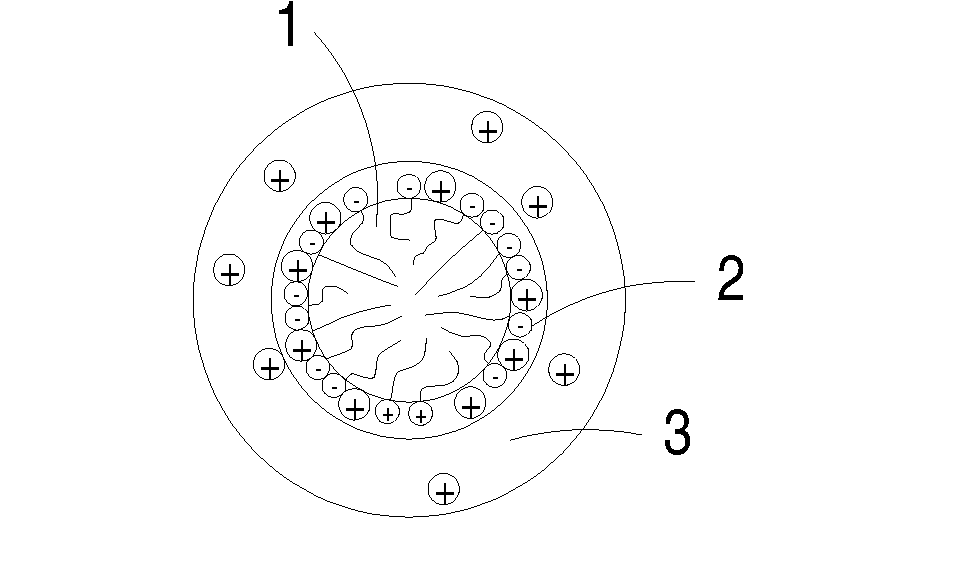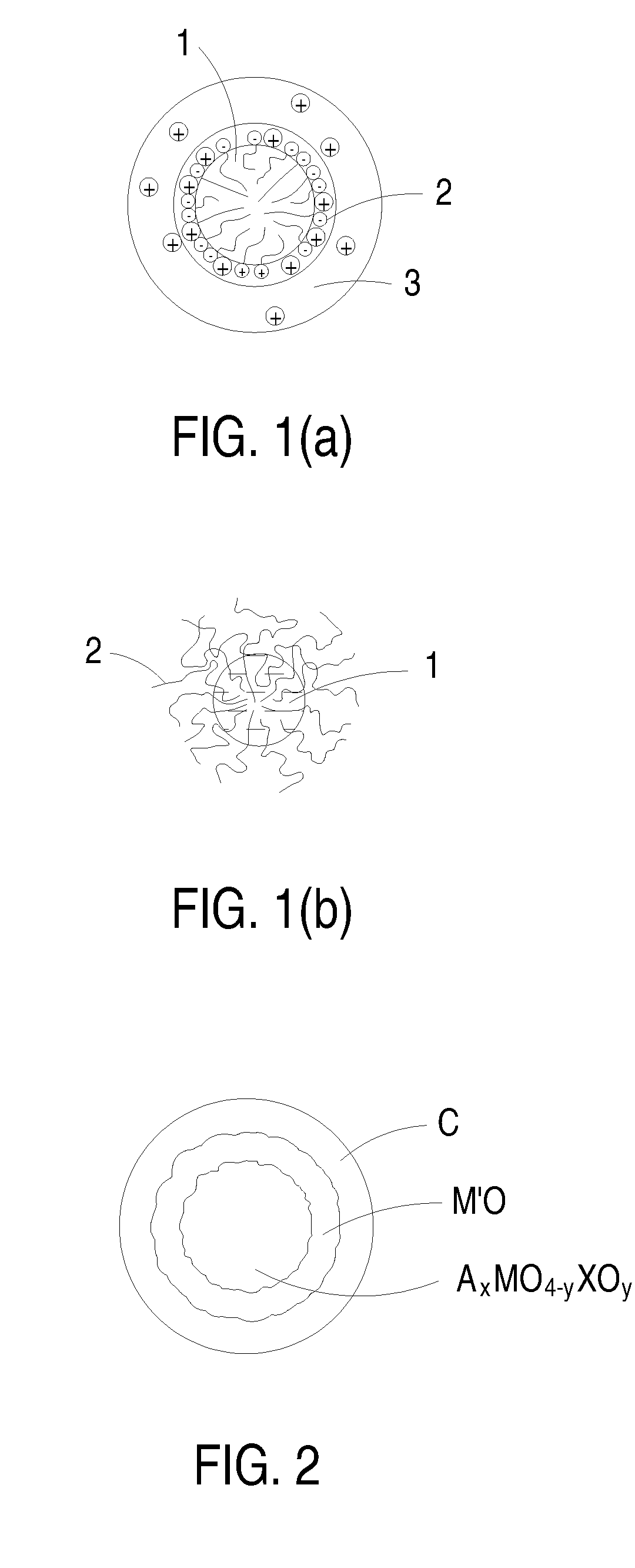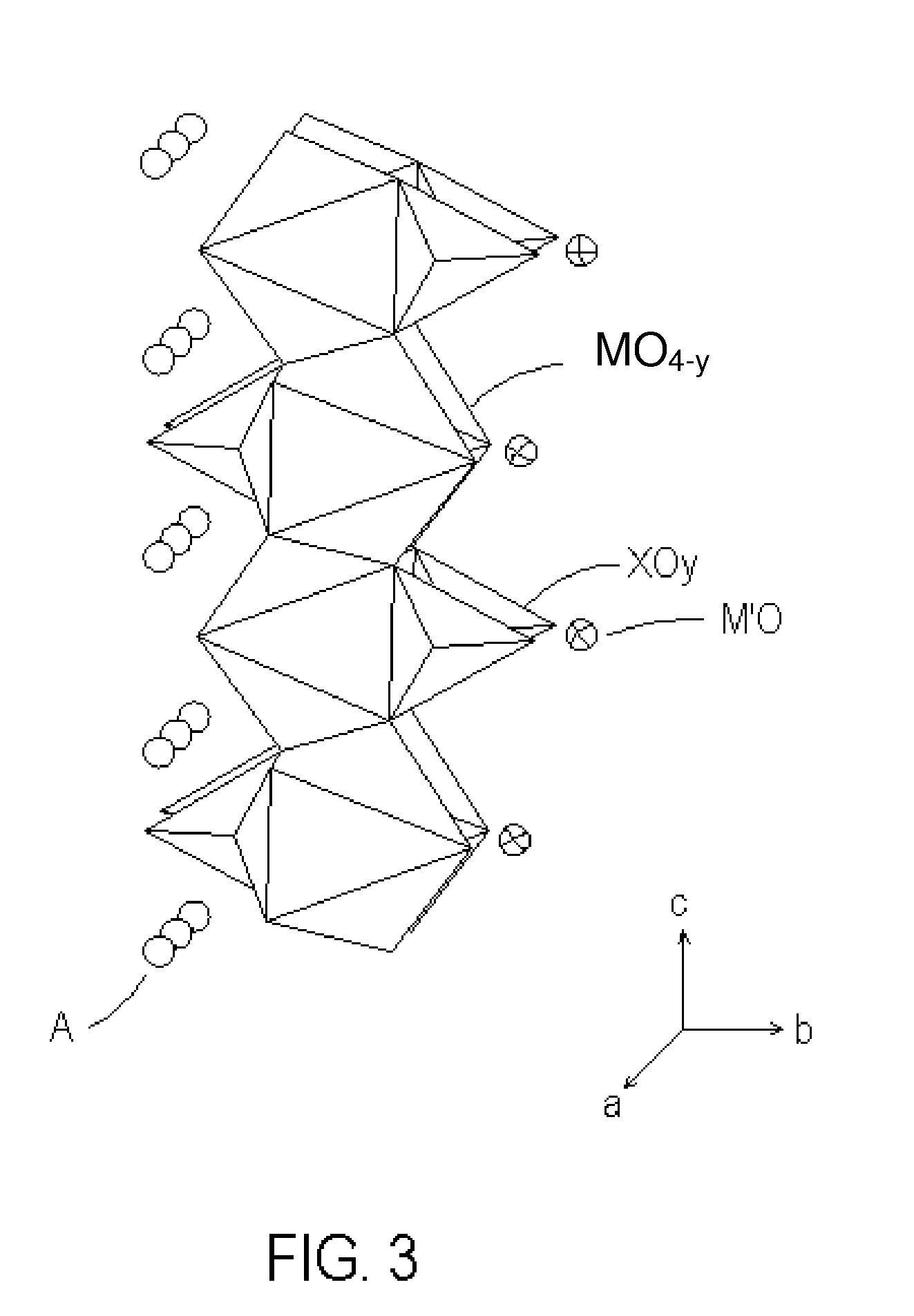Novel cocrystalline metallic compounds and electrochemical redox active material employing the same
a technology of cocrystalline metallic compounds and electrochemical redox active materials, applied in the field of metallic compounds, can solve the problems of insufficient conductivities, insufficient and related research was restricted to solid-state electrolytes, etc., and achieves enhanced ion diffusibility and electron conductivity
- Summary
- Abstract
- Description
- Claims
- Application Information
AI Technical Summary
Benefits of technology
Problems solved by technology
Method used
Image
Examples
example
Example 1
[0034]0.2 mole of diammonium hydrogen phosphate and 0.25 mole of citric acid were mixed and dissolved in 300 ml of deionized water to form an acidic solution. 10 ml of Triton X-100 (a nonionic surfactant) was added to the acidic solution. After the acidic solution and the Triton X-100 were thoroughly mixed, 2 mole of ferrous chloride was added to form a mixture of ferric phosphate and ferrous phosphate at a temperature of 20-30° C. With thorough stirring, 2 mole of lithium chloride was added. A 99% acetic acid was titrated until the pH value of the reaction solution was adjusted to 5. With continuous stirring, the reaction solution was completely dispersed.
[0035]After continuous stirring over a course of 48 hours, the dispersed solution was filtered through a polypropylen filter to form a solid-state mixture of ferric phosphate and ferrous phosphate. The solid-state mixture was washed with distilled water to remove contaminate.
[0036]The solid-state mixture of ferric phospha...
example 2
[0038]0.2 mole of diammonium hydrogen phosphate and 0.25 mole of citric acid were mixed and dissolved in 300 ml of deionized water to form an acidic solution. 10 ml of BS-12 (Cocoal kanoy lamido propyl betaine, an amphoteric surfactant) was added to the acidic solution. After the acidic solution and the BS-12 were thoroughly mixed, 2 mole of ferrous chloride was added to form a mixture of ferric phosphate and ferrous phosphate at a temperature of 20˜30° C. With thorough stirring, 2 mole of lithium chloride was added. A 99% acetic acid was titrated until the pH value of the reaction solution was adjusted to 5. With continuous stirring, the reaction solution was completely dispersed.
[0039]After continuous stirring over a course of 48 hours, the dispersed solution was filtered through a polypropylen filter to form a solid-state mixture of ferric phosphate and ferrous phosphate. The solid-state mixture was washed with distilled water to remove contaminate.
[0040]The solid-state mixture o...
example 3
[0042]0.2 mole of diammonium hydrogen phosphate and 0.25 mole of citric acid were mixed and dissolved in 300 ml of deionized water to form an acidic solution. 10 ml of DNP (a cationic surfactant) was added to the acidic solution. After the acidic solution and the DNP were thoroughly mixed, 2 mole of ferrous chloride was added to form a mixture of ferric phosphate and ferrous phosphate at a temperature of 20˜30° C. With thorough stirring, 2 mole of lithium chloride was added. A 99% acetic acid was titrated until the pH value of the reaction solution was adjusted to 5. With continuous stirring, the reaction solution was completely dispersed.
[0043]After continuous stirring over a course of 48 hours, the dispersed solution was filtered through a polypropylen filter to form a solid-state mixture of ferric phosphate and ferrous phosphate. The solid-state mixture was washed with distilled water to remove contaminate.
[0044]The solid-state mixture of ferric phosphate and ferrous phosphate, 6...
PUM
| Property | Measurement | Unit |
|---|---|---|
| Volume | aaaaa | aaaaa |
| Volume | aaaaa | aaaaa |
| Volume | aaaaa | aaaaa |
Abstract
Description
Claims
Application Information
 Login to View More
Login to View More - R&D
- Intellectual Property
- Life Sciences
- Materials
- Tech Scout
- Unparalleled Data Quality
- Higher Quality Content
- 60% Fewer Hallucinations
Browse by: Latest US Patents, China's latest patents, Technical Efficacy Thesaurus, Application Domain, Technology Topic, Popular Technical Reports.
© 2025 PatSnap. All rights reserved.Legal|Privacy policy|Modern Slavery Act Transparency Statement|Sitemap|About US| Contact US: help@patsnap.com



